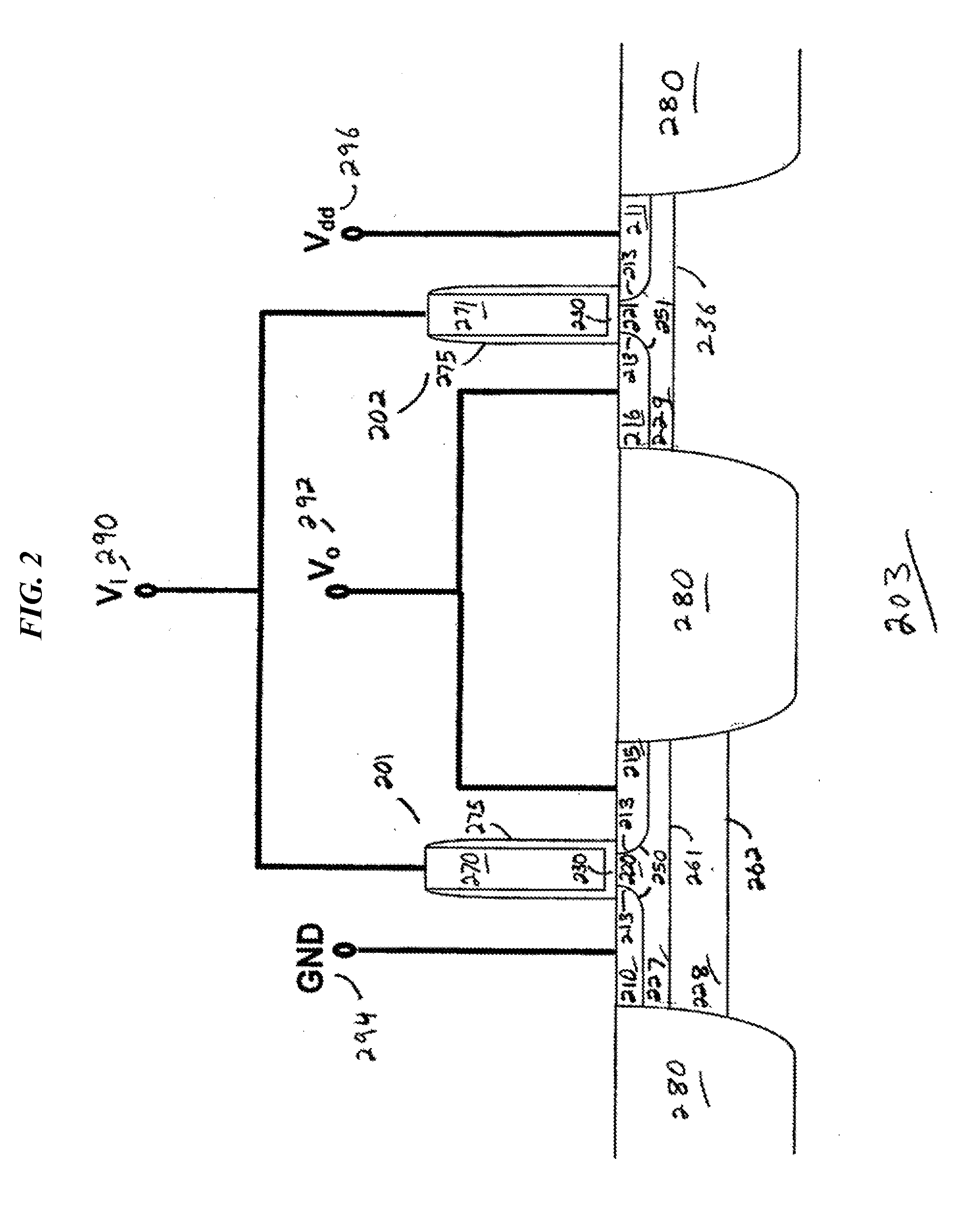Method of manufacturing a CMOS device with zero soft error rate
a technology of cmos and manufacturing process, applied in the direction of cmos devices, electrical equipment, basic electric elements, etc., can solve the problems of soft errors, integrated circuit reliability, soft errors (james f. ziegler), soft errors occur when digital information spontaneously changes, etc., and achieve the effect of eliminating soft errors without added cos
- Summary
- Abstract
- Description
- Claims
- Application Information
AI Technical Summary
Benefits of technology
Problems solved by technology
Method used
Image
Examples
Embodiment Construction
[0021]In general, the present invention provides an integrated circuit and method of fabrication, the circuit having zero soft error rate. In one embodiment of the present invention, the integrated circuit is generally comprised of at least one NMOS device or at least one PMOS device; wherein at least one of the NMOS devices or PMOS devices is a Schottky barrier MOS (SB-MOS) device with no parasitic bipolar action and significantly reduced field-funneling effect during an energetic particle strike by means of a buried well structure. The present invention also provides a method comprising the steps of providing a semiconductor substrate; providing isolation regions, such as STI, that separate NMOS active regions and PMOS active regions; providing an N-type well (N-well) implant in the NMOS active region and a P-type well (P-well) implant in the NMOS active region, the first N-well located vertically below the P-well region; providing a second N-well implant in the PMOS active region...
PUM
 Login to View More
Login to View More Abstract
Description
Claims
Application Information
 Login to View More
Login to View More - R&D
- Intellectual Property
- Life Sciences
- Materials
- Tech Scout
- Unparalleled Data Quality
- Higher Quality Content
- 60% Fewer Hallucinations
Browse by: Latest US Patents, China's latest patents, Technical Efficacy Thesaurus, Application Domain, Technology Topic, Popular Technical Reports.
© 2025 PatSnap. All rights reserved.Legal|Privacy policy|Modern Slavery Act Transparency Statement|Sitemap|About US| Contact US: help@patsnap.com



